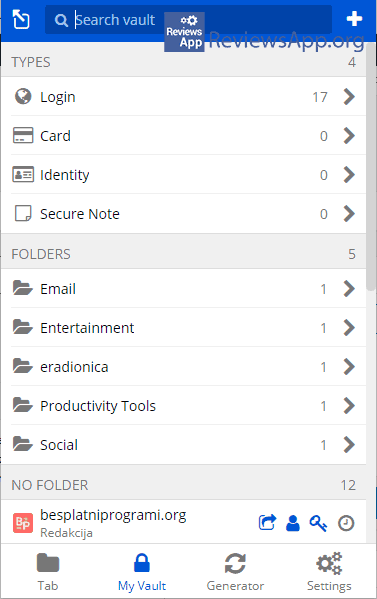

Now that you have all of the software set up, you’re finally ready to use the password manager for what it’s designed to do: Create and store log-in credentials for all your many online services. Just make sure not to lose it because in most cases, you won’t be able to get into your password manager without it.ĭuring setup, some password managers will prompt you to turn on multifactor authentication, and we encourage you to do so. A sticky note on your desktop computer saying “password manager password” is probably a bad idea if you share your office space, but jotting it down in a notebook stored somewhere safe at home is probably fine. You’ll need to memorize this password, but it’s also fine to write it down. Just make sure it’s at least 16 characters long. Because you’ll need to enter it often, it’s best to avoid random symbols and letters and use a complete sentence or series of words instead. You’ll want to make sure this password is strong because it’s the key to all of your other passwords. This is one password that your password manager can’t store for you. One of the first things you’ll be asked to do is create a strong master password. From here, the steps will vary a bit depending on which service you use. If you try a password manager and find that it doesn’t offer the features you’re looking for, you can always upgrade to the paid version or export your data to another password manager.Īfter deciding which password manager to use, go to the company’s website and create an account. And Dashlane’s free version allows you to store up to 50 passwords, but only on a single device.ġPassword doesn’t have a free version, but it offers a free 14-day trial. For example, Bitwarden’s free password manager options don’t include the paid version’s feature that identifies weak or reused passwords. Keeper’s free version lets you generate passwords on your mobile device but doesn’t give you desktop, web vault, or browser extension access, and it doesn’t auto-fill passwords on your behalf.

The free options are more limited in features. These include Bitwarden, Dashlane, and Keeper, which have free and paid options. We use many separate tests and diagnostic tools to take an in-depth look at everything, including each password manager’s resistance to known hacking techniques, whether they collect user data for their own marketing purposes, and whether they have features that flag passwords you’re using if they have been discovered in a data breach.ġPassword is the only password manager that earns Excellent scores in all three areas, but we also recommend several others that receive Overall Scores of Very Good. Consumer Reports evaluates password managers based on three broad criteria: privacy, security, and ease of use.


 0 kommentar(er)
0 kommentar(er)
